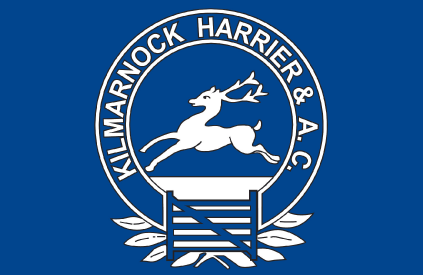Kilmarnock Harriers have been liaising with Scottish Athletics and other lead clubs and organisations to explore a variety of club structures to allow the club to implement a fit for purpose structure, meeting the needs of the membership.
The club are now implementing a new club structure, considering the research and guidance from the various experts in athletics.
The new structure is based on age group and athletes will move through the athlete pathway and potentially change coach and group up to four times in their athletic journey. These changes will take place each year in September or October.
This means that there are a number of athletes moving to new groups and coaches, given the change of age group.
Below is a rough guide to what each age group should be doing at their stage of the pathway
Under 11 Athletes – FUNdamentals
The main objective should be the overall development of the athlete’s physical capacities and fundamental movement skills. The key points of this phase are:
- Participation in as many events as possible
- Speed, power and endurance are developed using FUN games
- Appropriate and correct running, jumping and throwing techniques are taught using the ABC’s of athletics
- Introduction to the simple rules and ethics of sports
- Strength training with exercises which use the child’s own body weight; medicine ball and Swiss ball exercises
- Training programs, are structured and monitored but not periodised
- Develop the athlete’s:
- ABC’s (Agility, Balance, coordination and Speed)
- RJT (Running, Jumping, Throwing)
- KGBs (Kinesthetics, Gliding, Buoyancy, Striking with a body part)
The first critical period of speed development will occur during this phase. Linear, lateral and multi-directional speed should be developed, and the duration of the repetitions should be less than 5 seconds. Fun and games should be used for speed training and the volume of training should be lower.
Under 13 Athletes – Foundation
The main objective should be to learn all fundamental athletic skills. The key points of this phase are:
- Develop fundamental movement skills
- Learn general overall sports skills, using multiple events to develop the athletes
- Continue to develop strength with a medicine ball, Swiss ball and own body-weight exercises as well as hopping-bounding exercises
- Continue to develop endurance with games and relays
- Introduce basic flexibility exercises
- Continue to develop speed with specific activities during the warm-up, such as agility, quickness and change of direction
- Develop knowledge of warm-up, cool down, stretching, hydration, nutrition, recovery, relaxation and focusing
- Training programs are structured and based on a single periodisation
- Competition is structured and a 70:30 training/practice to competition-ratio is recommended
There will be no event specialisation at this age group, ALL groups will be trained in all areas of athletic events, running, jumping and throwing.
Under 15 Athletes – Event Group Development
The main objective should be the overall development of the athlete’s physical capacities (focus on aerobic conditioning) and fundamental movement skills. The key points of this phase are:
- Develop speed and sport-specific skills
- Athletes may select a specific event group (Speed, Endurance, Jumps or Throws)
- Develop the aerobic base – after the onset of Peak Height Velocity (PHV)
- Learn correct lifting techniques, where appropriate
- Develop knowledge of how and when to stretch, how to optimise nutrition and hydration, mental preparation, how and when to taper and peak
- Establish pre-competition, competition and post-competition routines
- The strength training window for boys begins 12 to 18 months after PHV
- There are two windows of opportunity to strength training for girls
- Window one is immediately after PHV
- Window two begins with the onset of menarche (the first menstrual period)
- Special emphasis is also required for flexibility training due to the sudden growth of bones, tendons, ligaments and muscles
- A 60% training to 40% competition ratio (includes competition and competition-specific training) is recommended
Athletes will be advised by their Under 13 coach as to their best path in the sport, which will mean they will move to one of the Event Group Coaches (Speed, Jumps, Endurance or Throws)
Under 17 & Under 20 Athletes – Event Group Development & Event Specialisation
The main objective should be to optimise fitness preparation, sport/event specific skills and performance. The key points of this phase are:
- 50% of the available time is devoted to the development of technical and tactical skills and fitness improvements
- 50% of the available time is devoted to competition and competition-specific training
- Learn to perform these sport specific skills under a variety of competitive conditions during training
- Special emphasis is placed on optimum preparation by modelling training and competition
- Fitness programs, recovery programs, psychological preparation and technical development are now individually tailored to the athlete’s needs
- Double and multiple periodisations are the optimal framework of preparation
The club further split up endurance at this stage, with 400/ 800/ 1500m athletes in one group, anyone from 1500m up will be with another group.
Under 20 & Senior Athletes – Event Specialisation & Performance
The main objective should be to maximize fitness preparation and sport/event specific skills as well as performance. The key points of this phase are:
- All of the athlete’s physical, technical, tactical, mental, personal and lifestyle capacities are now fully established, and the focus of training has shifted to the maximization of performance
- Athletes train to peak for major competitions
- Training is characterised by high-intensity and relatively high volume with appropriate breaks to prevent overtraining
- Training to competition ratio in this phase is 25:75, with the competition percentage including competition-specific training activities
